Written by Anne Lawrence-Mathers, Professor in Medieval History, University of Reading.
If you live in Reading, you may know that King Henry I founded Reading's royal abbey in 1121. However, you may be unaware that Henry I and Reading Abbey also ensured—unintentionally—that our town would play a part in bringing Halloween to England.
A hellish vision and the Feast of All Souls
King Henry established Reading Abbey in 1121 AD with the help of monks from Cluny Abbey, France. At the time, Cluny was the most significant and influential monastery in Europe. It had priories (dependent, smaller monasteries) across France, Spain, Italy, and England (in Lewes). Several relatives of King Henry had been patrons of these monasteries, so connecting Reading and Cluny was a natural fit.
The link between Cluny Abbey and Halloween emerged over a century earlier when an astonishing message reached the Abbot of Cluny, Odilo (962 - 1048), from a hermit living on a rocky outcrop in the Mediterranean. He reported he had witnessed a hellish vision: the souls of the dead being tortured with fire by demons. He believed only the intervention of Cluny Abbey could save them.
In response to this menacing dispatch, the monks at Cluny inaugurated a special feast of commemorations to protect and honour the souls of all Christian dead: the Feast of All Souls. It fell the day after the Feast of All Saints (the Feast of All Hallows), a day that commemorated all Christian saints, both known and unknown. At Cluny, this new commemoration of All Souls became so important that the monks held a follow-up service on 8th November (the ‘Octave’ of All Saints Day), which later appeared in the service books of Reading Abbey up until the 15th century.
The Feast of All Souls and the Feast of All Saints merged into a great, two-day festival in the religious calendar: Hallowmas. English sermons and poems of the late Middle Ages claim it ranked immediately after Christmas in importance!
God's saints are angels and human beings. Angels are spirits without body. Now this day is worthily consecrated to these angels, and also to the holy people who through great virtues have flourished for God from the beginning of the world.
- Aelfric of Eynsham (monastic writer)
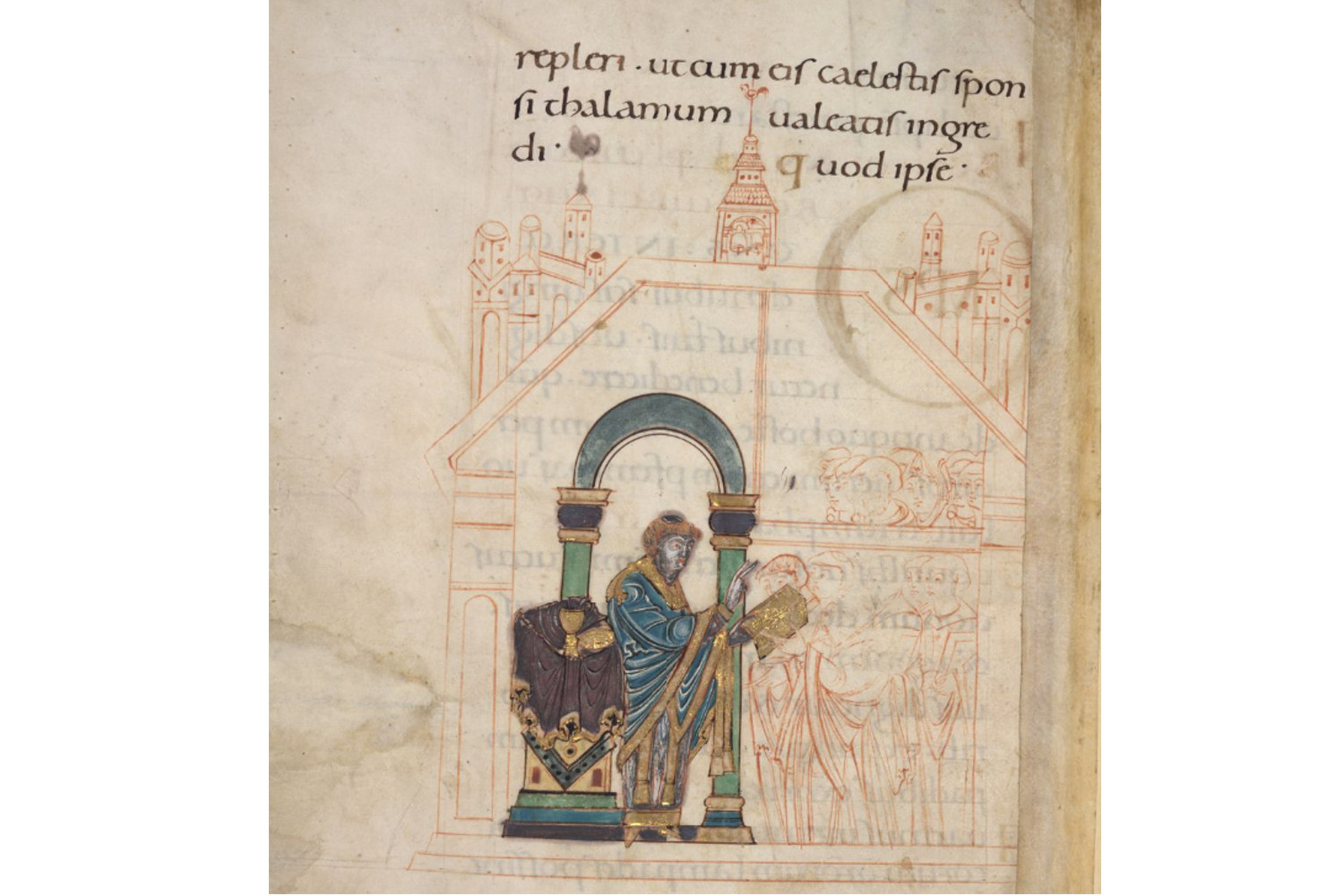
St. Aethelwold and his congregation (BL MS Add. 29598 f118v)
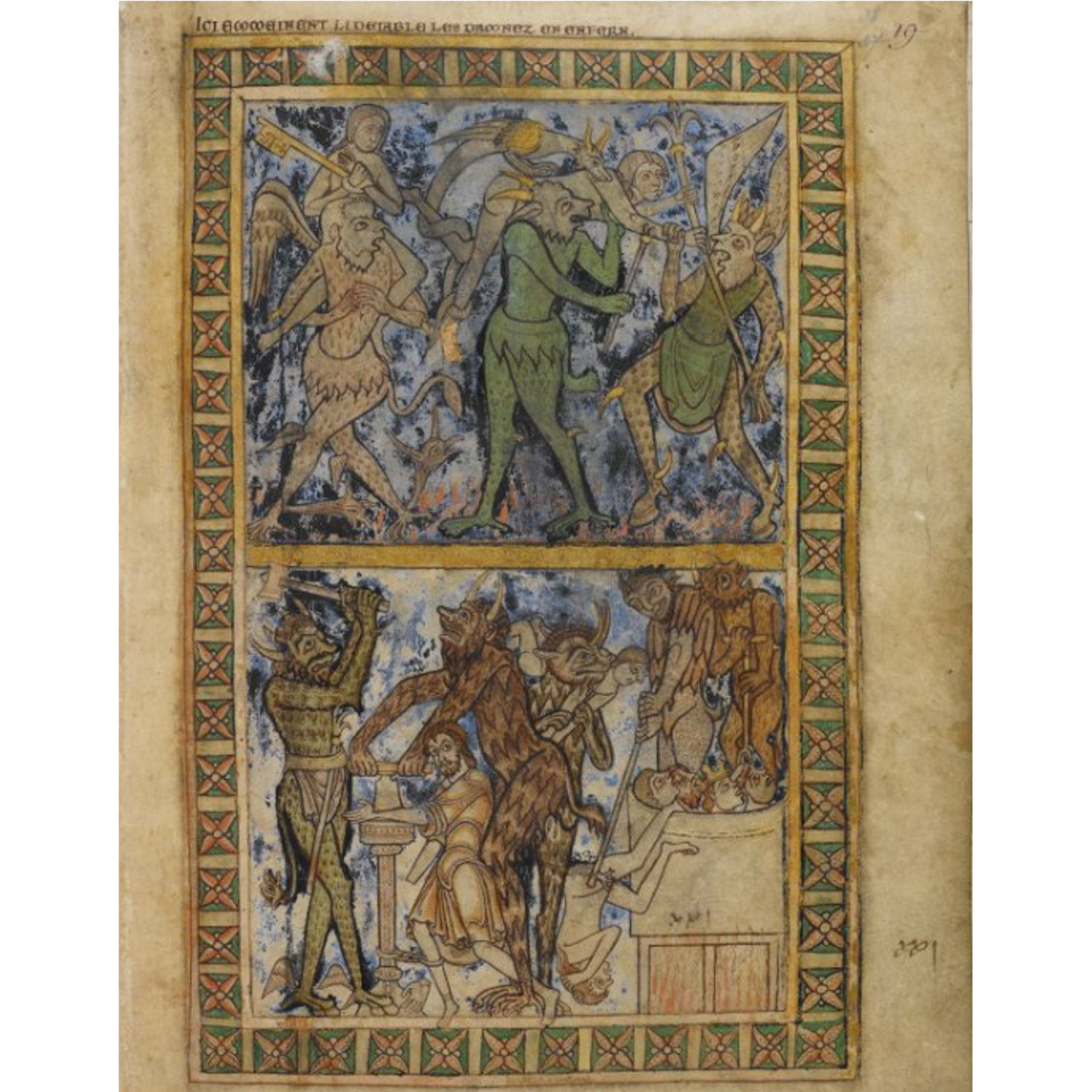
The dead tormented by demons (BL MS Cotton Nero C iv, f38r)
Holy relics and spiteful spirits
Besides this special celebration, Reading Abbey could call upon the power of its great relic, the Hand of St James, throughout the year.
One example of the relic's use is the story of Alice, a girl from Essex. Alice had become the victim of a ghost, which appeared before her as a corpse in a shroud. Alice was so terrified that she fell into a fire, which burned her badly. No one could help her until St James appeared before her and told her to come to Reading. The saint healed her burns, and Alice stayed in Reading for some time. She helped the monks and gained protection from the evil spirit.
Many other abbeys told stories just like this one. All agreed it was the Church's duty to bury the dead while protecting the living from ghosts and supernatural threats.
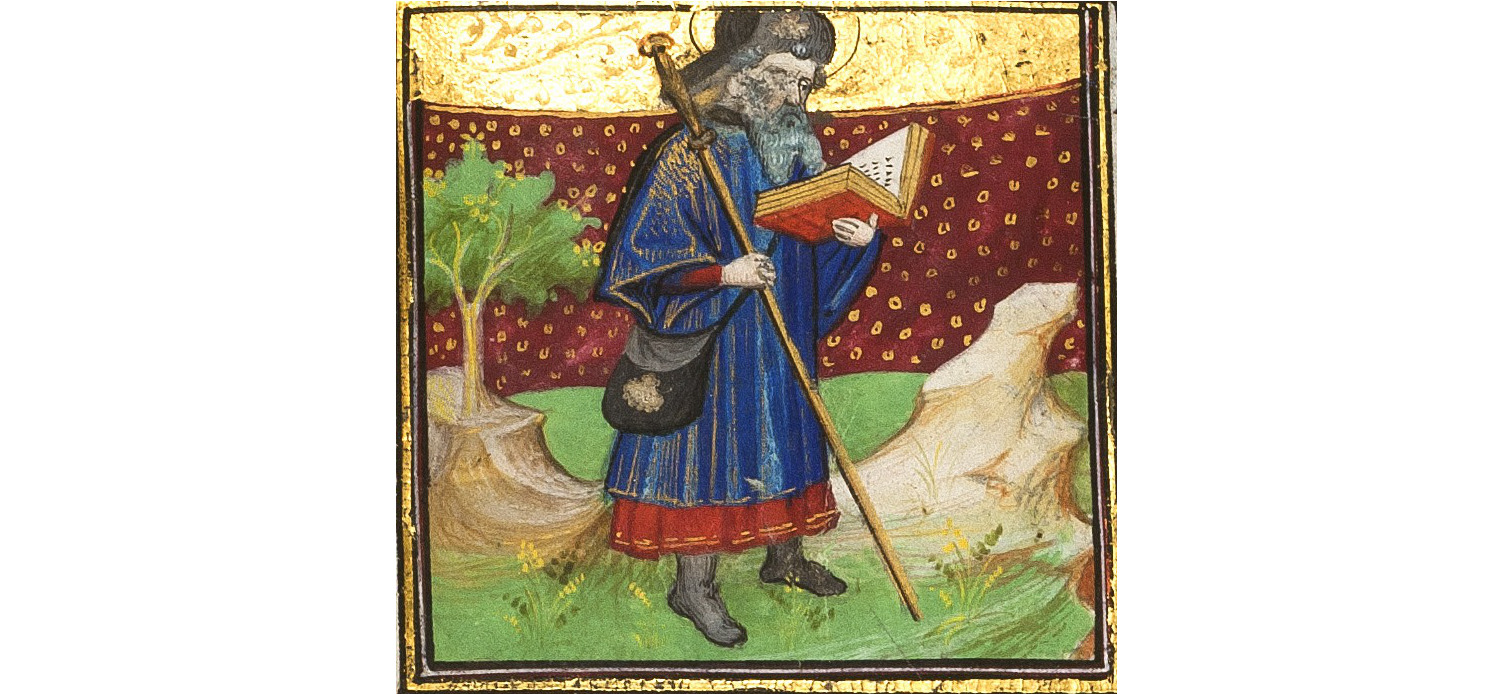
St. James (Reading University MS 2087)
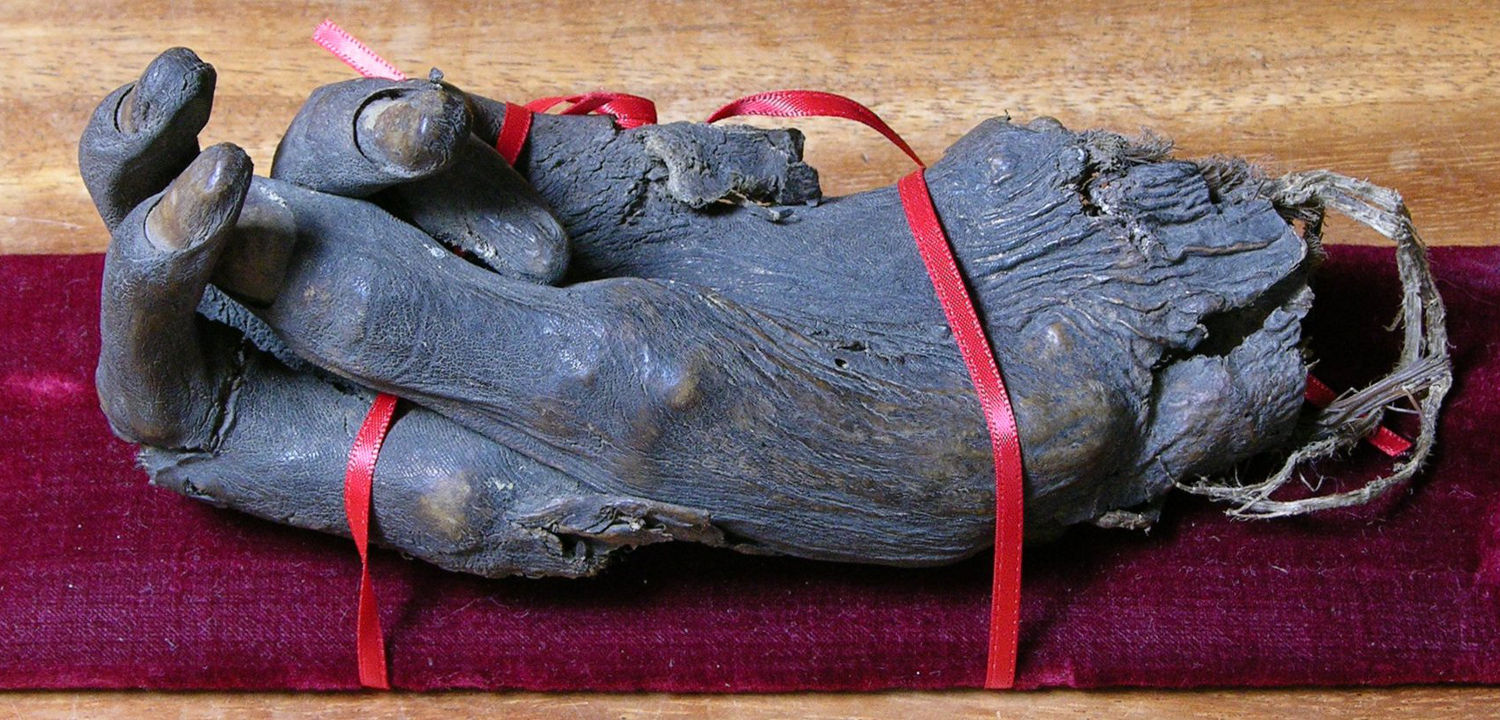
The hand of St. James (photo: R. Baxter)
Celebrating Hallowmas
With its links to ghosts and fending off evil spirits, it is unsurprising that by the late Middle Ages, people celebrated Hallowmas by lighting candles and torches, giving musical performances in churches, and ringing church bells (often until midnight).
Reading Abbey's great church provided a place of sacred power and safety in which people solemnly celebrated the feasts of All Saints and All Souls.
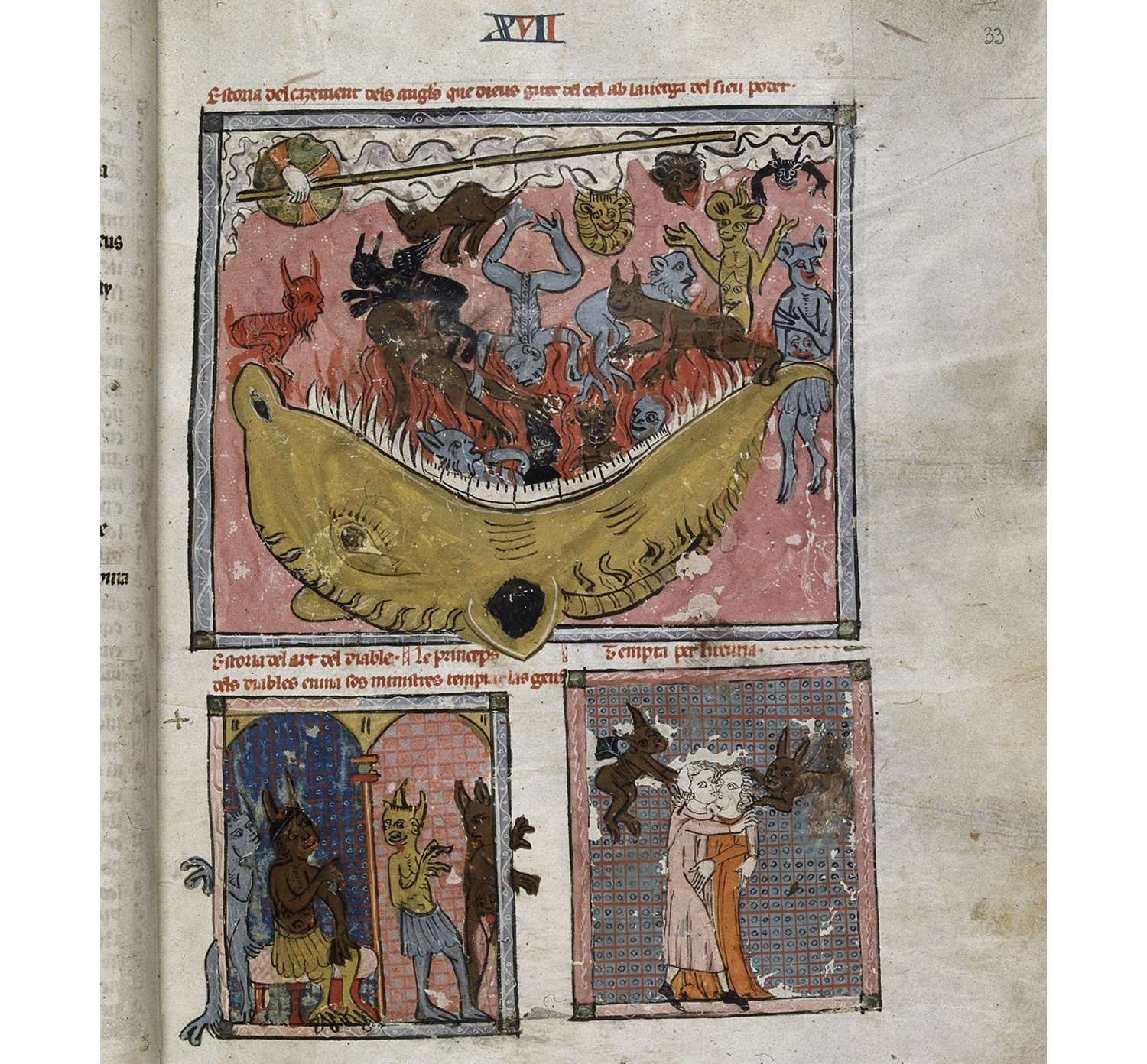
Punishment of sinners (BL MS Royal 19 C I, f33)
Beyond the Reformation
The feasts of Hallowmas changed amid the Reformation, when England rejected the Catholic church in favour of the new Church of Englandm, which merged All Souls Day into All Saints Day. However, ritual contact with the dead, feasting, lighting up the night, and communal protection against danger continued to hold importance at the turn of the beginning of November, as we continue to mark Halloween on the 31st October today!





